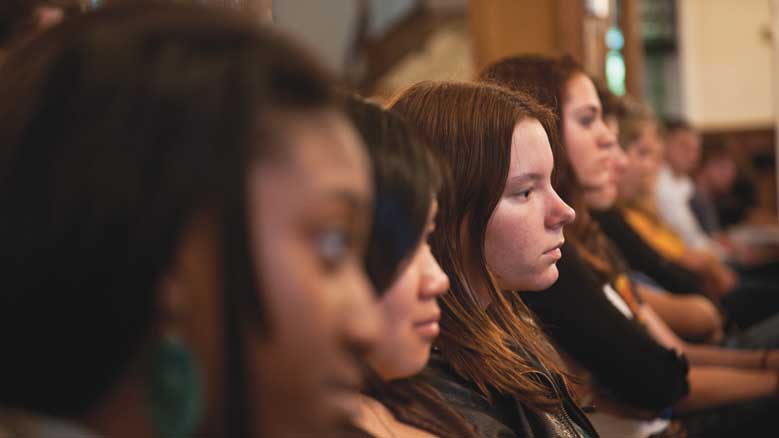I realize I’m not unbiased in my thinking about the subject of this special issue. I suspect that none of us are. While most of us are not teachers or educators, all of us have been students at some point in our lives. Many of us also have been the parents of students. We’ve had our very personal experiences of education, and we no doubt have formed our opinions about what works well and what doesn’t. Most of my adult life has been spent in Philadelphia, a city which struggles a great deal with its troubled public education system and which offers a host of alternatives, including a sizeable number of Friends schools.
I was raised in a family that used public schools in several states and paid close attention to the quality of education that my sisters and I received. As an adult, I joined a monthly meeting that has a highly esteemed Friends school under its care. While parenting, I, too, have paid close attention to the education that my children have received, both in a Friends school and, mostly, in public schools. I’ve worked for the administration of a Friends school and a selective university. Over the years I’ve thought quite a bit about what Quakerism has to offer education wherever it takes place, whomever the students are.
In this issue we endeavor to bring to the reader opportunities to encounter ways that Quaker values can deeply inform working with students of all ages in many different learning environments. Friends have long been aware of the enormous importance of education and have cared profoundly about bringing Quaker values into the classroom. This great interest and concern has led Friends to establish schools and colleges across the U.S. that are outstanding: often known for their academic excellence, but also for their capacity to affirm individual strengths, engender compassionate and responsible behavior, and promote holistic approaches to solving problems by the students who have been fortunate to experience these learning environments.
As we editors at the Journal planned publication of this special issue, we thought about this long tradition, and we also considered the many Friends who do not have access to or who choose not to use Friends schools. It is our hope that wherever you are, whatever your stage in relation to schooling and education, you will find inspiration and encouragement in this issue.
I’m particularly grateful for Tom Farquhar’s “What Are Schools For?” (p. 6). In it he urges us—in schools everywhere—to create educational systems that are primarily focused upon creating caring communities, learning nonviolent conflict resolution, and engendering environmental stewardship. He argues persuasively that nothing less than survival of life on the planet depends upon such a new educational paradigm—and that Friends are well positioned to provide leadership for this vision. In her moving article, “Brand New” (p. 20), Ayesha Imani tells how her maturing Quaker faith transformed her already successful teaching methods and the ambiance of her classrooms in very challenging urban public schools, underscoring that Quaker methods need not be practiced solely in Friends school classrooms. And I’m grateful to Max Carter for his description of a model program at Guilford College designed to build bridges across the branches of Friends and prepare young adults for servant leadership in the Religious Society of Friends.
I am convinced, Friends, that finding ways to bring our Quaker values into classrooms across the nation—and around the world—may be the most important contribution we can make to the future of humanity. I hope that we will all search for ways to support those among us who teach in the work that they do. There is much food for thought in this issue, whether you are a teacher, parent, student, school administrator, grandparent, or simply a caring member of the community. I heartily recommend all of it to you and encourage you to let us know your thoughts on how Quaker values can make a difference in our schools everywhere.



